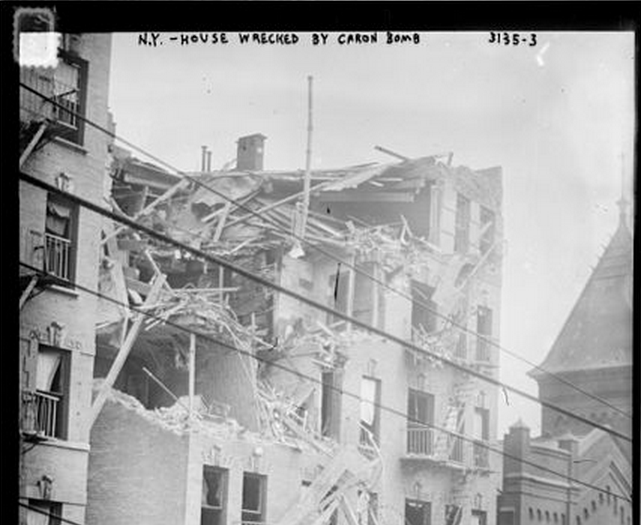1914: The Year in Review
by Mary Pilon

Over the holidays, while watching two children create Lego worlds at the foot of a glowing Christmas tree, it suddenly hit us that in only five years, it will be the twenties again. Feeling old, my cousin and I took swigs of white wine and shoved our faces with ham. So, instead of reflecting on 2014, let’s take a look at 1914:
— On June 28th, Archduke Franz Ferdinand and his wife, Sophie, were shot and killed, triggering a cascade of violence. The “Great War” was disease-ridden, fought in ungodly trenches, saw the deaths and injuries of millions and set the stage for World War II.
— In August, president Woodrow Wilson’s wife, Ellen Axson Wilson, died of Bright’s disease. In reviewing 1914, I found that many stories conclude with Chekhovian despair over losses like Wilson’s. Death and disease permeated culture then in a way far beyond what most of us can comprehend today. The average death rate was 13.6 per 1,000, a record low at the time, but much worse than today’s 8.07, while life expectancy was 52 years for men and 56.8 years for women; Tom Cruise and Geena Davis would likely be dead, not still acting.
— On Lexington Avenue near 103rd St., a bomb intended for John D. Rockefeller exploded in an anarchist’s apartment. The incident became Known as the “Lexington Avenue bombing;” four people died and dozens were injured. It was one of many politically charged acts of violence of the time, among them bombings and assassination attempts by anarchist Luigi Galleani and his followers. Meanwhile, at Frank Lloyd Wright’s home in Wisconsin, an angered servant killed seven people, including Wright’s mistress and her two children, and torched the place. The “Wright-mare” was a national news sensation at the time, and became the stuff of architecture student lore.
— Against this backdrop, pop culture, as always, provided reflection. Radio was the rage, Edgar Rice Burroughs’ “Tarzan of the Apes” was published and Charlie Chaplin was on screen as the Little Tramp. Franz Kafka’s “The Metamorphosis” hit shelves. James Joyce’s “A Portrait of the Artist as a Young Man” began episodic publication in London. E.M. Forster wrote a novel of homosexual love, Maurice, that wouldn’t be published until more than 50 years later.
— Charles Taze Russell, founder of what we know today as the Jehovah’s Witnesses, predicted October 2, 1914, as the date for the “full end” of Babylon. We’re still here. For now.
— Greyhound Lines was established in Minnesota as a bus transportation services for iron ore miners. It would be nearly a century before the Fung Wah lines would make Greyhound buses look posh in comparison.
— In August, the Panama Canal officially opened! An engineering marvel and the subject of much criticism, the canal would not be taken over by the Panamanian government until 1999. Its construction posed a variety of health risks to its workers, who battled mosquitos and malaria; many thousands died. Today, the canal still faces millions in cost overruns.
— The Gopher Gang had control of Hell’s Kitchen and corruption involving police and the mob proved a repeated issue, most visibly in 1914 with the dismissal of Chicago’s police captain. Crime was higher and payoffs to law enforcement were prevalent; in the South, Jim Crow laws reigned.
At least now we have the future to look forward to, and not a locust plague.
Never Better, a collection of essays from writers we love, is The Awl’s goodbye to 2014.
